TO MY READERS: HOW TO USE THE BLOG
Click Here
Check out this Candelaria bridge video just posted on utube from Drlabash:
[ view entry ] ( 4825 views ) | permalink |
SENORA VILLA SAYS OF PANCHO: POOR PEOPLE ARE THE ONES WHO LOVE HIM. A PEN FROM THE PAST BY ROSS MCSWAIN

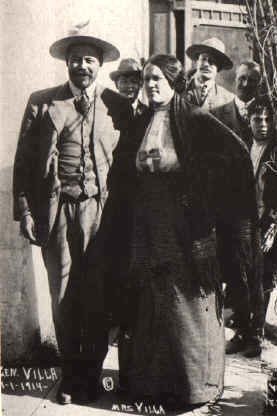
In mid-October 1965, a new mayor took office in Ojinaga, just across the river from Presidio. A gala fiesta was planned for the change in municipal officials. Dignitaries from all over the state of Chihuahua were on hand for the event.
But probably the most important person there was Luz Corral Villa, a spry 72-year-old matron with shining eyes, steel gray hair and a broad smile. Luz Villa is the widow of Pancho Villa, on of the most famous men in Mexico. Although more than 50 years ago Villa's army of peasant soldiers sacked Ojinaga after a bloody battle in which mort than 1,000 persons died violently, Senora Villa was given one the biggest welcomes any VIP could receive from Ojinaga citizens.
What was the secret of Senora Villa's acceptance, not only in Ojinaga but in cities though out the United States, including Columbus, N.M., where Americans died before Villas guns?
"The older people remember what Pancho Villa did for the poor." Senora Villa said, "Even though there was much bloodshed many years ago, the poor classes still remember him as their hero, their Robin Hood."
Senora Villa, a resident of Chihuahua City, was the revolutionary's only legal wife. (Note: According to the New York Times of July 13, 1966 Soledad Seanez Holguin also legally married Villa on May 1, 1919)
She readily admits that Villa had many mistresses and sired some 15 children by different women by several women, her eyes sparkle as she speaks of the bandit-general's exploits and their brief and hectic married life.
Senora Villa maintains a Pancho Villa museum in Chihuahua City. She lives in the same house Villa bought in 1906 from the money taken in bandit raids.
The 50-room house has been rebuilt twice since it was purchased. It was destroyed during the Mexican Revolution in 1913 and during the war between Villa and Carranza in 1917.
"Pancho didn't especially like politics," Senior Villa said during an interview in Ojinaga. "He had a strong sense of loyalty to the poor. He was pushed or forced to take part in the revolution," she said.
During the height of Villa's successes when he was undisputed dictator of all the northern provinces of Mexico, Senora Villa lived in seclusion in El Paso.
"I saw my husband for several days each month during the revolution when he would sneak into El Paso," she said. When he and Carranza fought, Pancho sent me to Havana, Cuba for safety."
Senor Villa was in Havana during the last revolutionary struggle. Her home in Chihuahua City was destroyed a second time.
When the Columbus, N.M. raid was staged in 1916, Villa had just sent his wife to Havana.
"I knew he was planning to attack an American town, but I did not know where or when," she said recently. "Pancho was furious with President Wilson for stopping the shipment of arms to him. He felt that the American president was in agreement with his actions. The raid was a retaliation for President Wilson's arms emabargo."
Senora Villa said stories saying Pancho Villa was not at Columbus during the raid are not true.
He planned and led the raid, she said, even though he was advised by his generals not to do so. They told him the American soldiers would follow and destroy him but he would not listen.
Senora Villa said her husband was very hot-tempered but was not cruel.
"He despised cowards and incompetent offices."
Villa hanged hundreds of persons in Durango and Chihuahua accused of desertion from his peasant army. Historians note, too, he had numerous officers in his band shot for failing to carry out his orders.
"The poor people are the ones who truly love him and his memory," she said. "Others hate and despise his name."
Senora Villa said her husband never drank to excess.
"He enjoyed parties" and found many beautiful women at the gatherings. He was famous. Women threw themselves at him," she added, explaining his many love affairs and many children."
The bandit's wife reared five of the reported 15 children born to various Villa mistresses. Three of his daughters and two sons are still living. A son, Samuel Villa, still resides in Chihuahua City. Octavio Villa, a minor government official, was killed at an ambush at Matamoros about two years ago. Another son, Agustin Villa, is in a mental hospital in Los Angeles. A nephew of Villa's, his namesake, fought in World War II with the U.S. Army. He was a paratrooper, Senora Villa said. The nephew now lives in Los Angeles.
Villa and Luz were married in 1911 when she was l8 years old. They met in 1910 when he took over her hometown of San Andres. He was a bandit chieftain, she said.
Senora Villa was living in Chihuahua City when Villa was gunned down in an ambush near Parral, Chihuahua, a mining center. His ranch, called Canutillo Hacienda, was near Parral but in the state of Durango.
"The ranch was taken by the government", she said, "because Villa was accused of owing the government more than $80,000 in taxes."
The revolutionary's widow said tales of Villa treasure being buried in the Sierra Madre Mountains is false.
"If there had been a lot of treasure he would not have had to ask for so many loans."
"The money taken from banks during the revolution went for and ammunition, uniforms and other equipment," Senora Villa said, "He was always in need of money for ammunition. During the last days of fighting, he had to ay two and three times for it (munitions) than its actual price since most of it had to be smuggled into Mexico."
In 1922, a year before he was killed, Villa was approached by an American film company about appearing in a motion picture about his life.
"Pancho refused to take part in the picture unless the company could promote the construction of a school in corporation with the Mexican government," Senora Villa said.
The school, to be used by orphans, was rejected by the Mexican government. No reason was given for the refusal, even though the school was badly needed.
The famous bandit loved children, his wife said.
"Pancho used to pick up children off the streets and take them to school. He took 300 children and fed them and bought them clothes at one time in Juarez."
Pancho and Luz Villa had a baby girl about a year after their marriage, but the infant died.
"I would have been proud to have had her live," Senora Villa said.
In 1950, Mexican president Aleman made an offer to rebuild the Villa home in its original state but nothing ever came of the offer. Senora Villa, however, has restored the home out of her funds, raised though donations to her Villa museum.
She lives alone in Chihuahua City, except for several servants who also help maintain the museum.
Last August and September, more than 3,000 persons visited her home to see the large collection of Villa papers, uniforms and other personal items of the late revolutionary.
On display is the Dodge touring car in which Villa was riding when shot to death, battle flags, weapons of all kinds, uniforms, his desk, letters and other numerous items.
Senora Villa said she had ten volumes of registration books containing more than of visitors to the museum.
"Guests have come from all over the world," she said.
Senora Villa is also a traveler. She has been all over the United States and has made several jet flights.
Early in 1965, she toured the U.S. appearing in person at premier showings of a documentary film on Villa made during the revolution. The film, put together from silent newsreels, but narrated, was produced by Columbia Pictures, Inc. The film company paid Senora Villa's expenses on the journey.
She said she tries to make several trips a year to Juarez. Her recent trip to Ojinaga was the first such trip in years. She was a houseguest of Mr. and Mrs. Pete Valenzula who she met in Chihuahua City about 12 years ago. Valenzula is a clerk in the Spencer Store at Presidio and has lived in the immediate area since birth.
Senora Villa's best friend and traveling companion is Senora Margaret H. Campos, a Chihuahua City music teacher. They have been friends for more than 40 years.
Villa's wife's greatest wish is that Pancho could have lived out his life more peacefully.
She said he was a happy man, although he was virtually in exile on his Durango ranch.
He was a big man, standing about six feet tall and weighing more than 200 pounds. He was graceful in his movements, and had a commanding voice. His very being expressed confidence.
"He had a strong sense of loyalty to the poor," she said. "He knew the hardship of being a field-hand, a laborer. He only wanted the poor to have more to eat, better living conditions and better education. These things he and his family had done without."
In April, a highlight of Senora Villa's life came when Governor Campbell of New Mexico visited her in Chihuahua City to discuss plans for the extension of U.S. Highway 180 from Columbus, N.M. into Mexico and into the state of Durango. The scenic highway Federal Road 45 in Mexico, would be called the Pancho Villa Trail. The highway should be an international effort.
Mexican peasants still call Pancho Villa, "mucho hombre." He will always be "a big man" to Luz Villa, his wife. Pancho Villa died on a hot July afternoon in 1923 as he and four bodyguards traveled a dusty road outside Parral.
More than a dozen heavily armed men blasted the Villa car as it started over a bridge crossing a shallow ravine. The gunmen, believed hired by Mexico City politicians, had hidden in ambush in a deserted adobe house.
Senora Villa said she did not know who killed her famous husband. She suspects he was assassinated by political foes.
"He was being mentioned too much in the news," she said. "He didn't like the way the government under Obregon was being run and said so on a number of occasions. He was killed because the politicians suspected he was being urged to lead another revolt."
Luz Villa's husband died as he had lived violently and with a pistol in his hand.
"He trusted the government when he was granted the pardon. But they (the politicians) apparently didn't trust him," she said.
Thanks Ross for the fine article, a chance for us all to look back and ponder. Gj
[ view entry ] ( 6512 views ) | permalink |
UPPER WALKER CREEK
UPPER WALKER CREEK
UPPER WALKER CREEK
UPPER WALKER CREEK
CAPOTE CREEK
CAPOTE CREEK
In the last 24 hours some 2 inches of rain has fallen in Candelaria and the ranches to the north in the Sierra Vieja. Walker Creek and Capote Creeks are running fast and according to reports, the Rio Grande is out of its banks at Candelaria. Candelaria lies in a natural flood plain and is subject to severe flooding when rain falls in the Sierra Vieja.The first two crossings of Capote above Candelaria are impassible. We are marooned.
Gj
[ view entry ] ( 7690 views ) | permalink |

ABOVE IS THE BRIDGE ON 3-22-08
PHOTO BY GLENN JUSTICE

ABOVE IS FORMER BRIDGE SITE ON 3-24-08
PHOTO BY GLENN JUSTICE

PHOTO COURTESY CLARA LONG@BORDER STORIES.ORG
 PHOTO BY GLENN JUSTICE
PHOTO BY GLENN JUSTICEYesterday after I posted the article and photos of the bridge, a large contingent of Border Patrol trucks and personnel removed the Candelaria footbridge. It no longer exists. As soon as we learned of the removal, we drove to Candelaria arriving there about 10:30 am. The last of the Border Patrol trucks were just leaving and the road blocked by heavily armed but courteous BP guards. I ask if the bridge was gone and if I might go take some photos at the crossing. They let us pass after the last truck drove out of the bosque. The bridge is gone. Not even a scrap or tiny piece of it left on either side of the river. Across the river on the Mexican side, a few amazed locals waved back to us. It was swift and efficient removal. Yesterday, it was there, today it is gone. They hauled every piece of the old bridge out on a flat bed trailer. As we drove by the school, the entire schoolyard was crammed full of Border Patrol vehicles. The remains of the bridge sat encircled on the trailer by U.S. government vehicles. We decided it was time to go home. It is a sad day on the river. For more than 50 years, the little bridge stood as a symbol of cooperation between two tiny Texas-Mexican border villages. Now it is history.
Gj
[ view entry ] ( 4451 views ) | permalink |
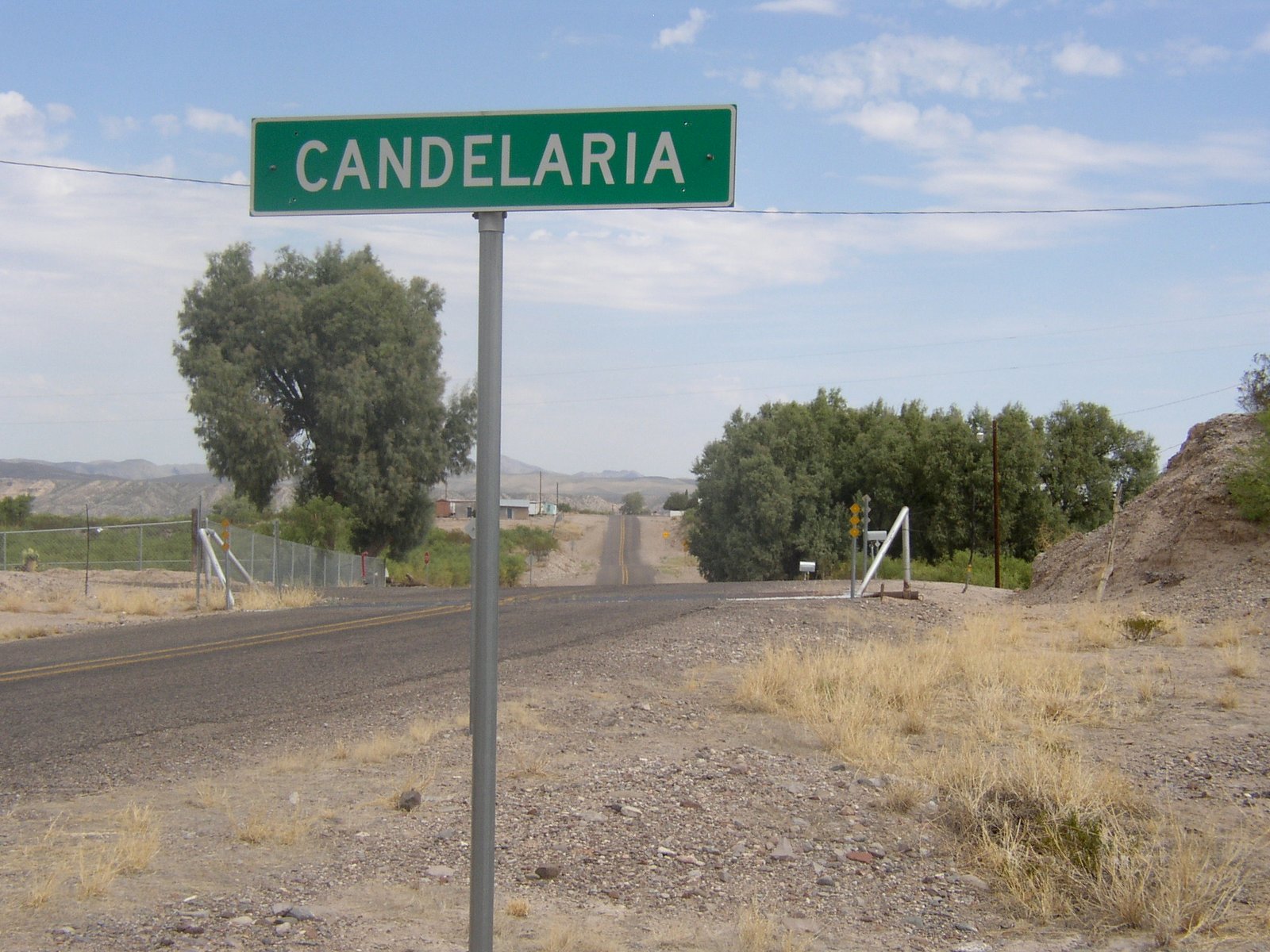
PHOTO BY GLENN JUSTICE
PHOTO BY GLENN JUSTICE
PHOTO COURTESY CLARA LONG@BORDERSTORIES.ORG
The old Candelaria bridge is still here. It spans a muddy trickle some five-foot wide in an almost dry arroyo. It's hot in the Presidio Valley. Few venture outside after the cool morning hours. The school kids are out for the summer so they are not using the bridge. Few do these days. Everyone waits to see if the bridge will survive. A squad of Border Patrol men and women stationed at the Candelaria school go about their duties patrolling this part of the border. It's a thankless job and they are the only law we have here. Some Andrew Jackson art painted on an old car hood expresses a lot of feelings about the school being closed. Across the river at the medical clinic, Dr. Maribel Aquino waits and wonders if her link to the outside world will be cut by the removal of the bridge. Manuel Carrasco is doing well and just got his new work visa. Not long ago, Manual suffered a heart attack on the Texas side and thanks to Dr. Aquino's clinic in San Antonio is alive and well today.
Gj
[ view entry ] ( 5553 views ) | permalink |
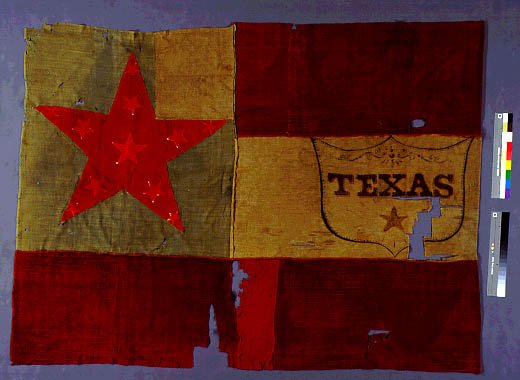


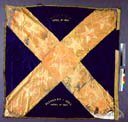
Above are four Texas Confederate battle flags from the Texas State Archives.
Truth is, the thousands of fine, brave Texans who fought and died in the Civil War did not fly the red, white and blue stars and bars of the south into battle. They did not fight to keep their slaves because few owned slaves. Texans joined the Confederate cause and fought and died in most of the major battles of the war. They fought and died because they felt threatened by the Federal Government and the election of Abraham Lincoln.
For more see:
http://www.tsl.state.tx.us/treasures/fl ... flags.html
http://www.tshaonline.org/handbook/onli ... /qkh2.html
Gj
[ view entry ] ( 85872 views ) | permalink |
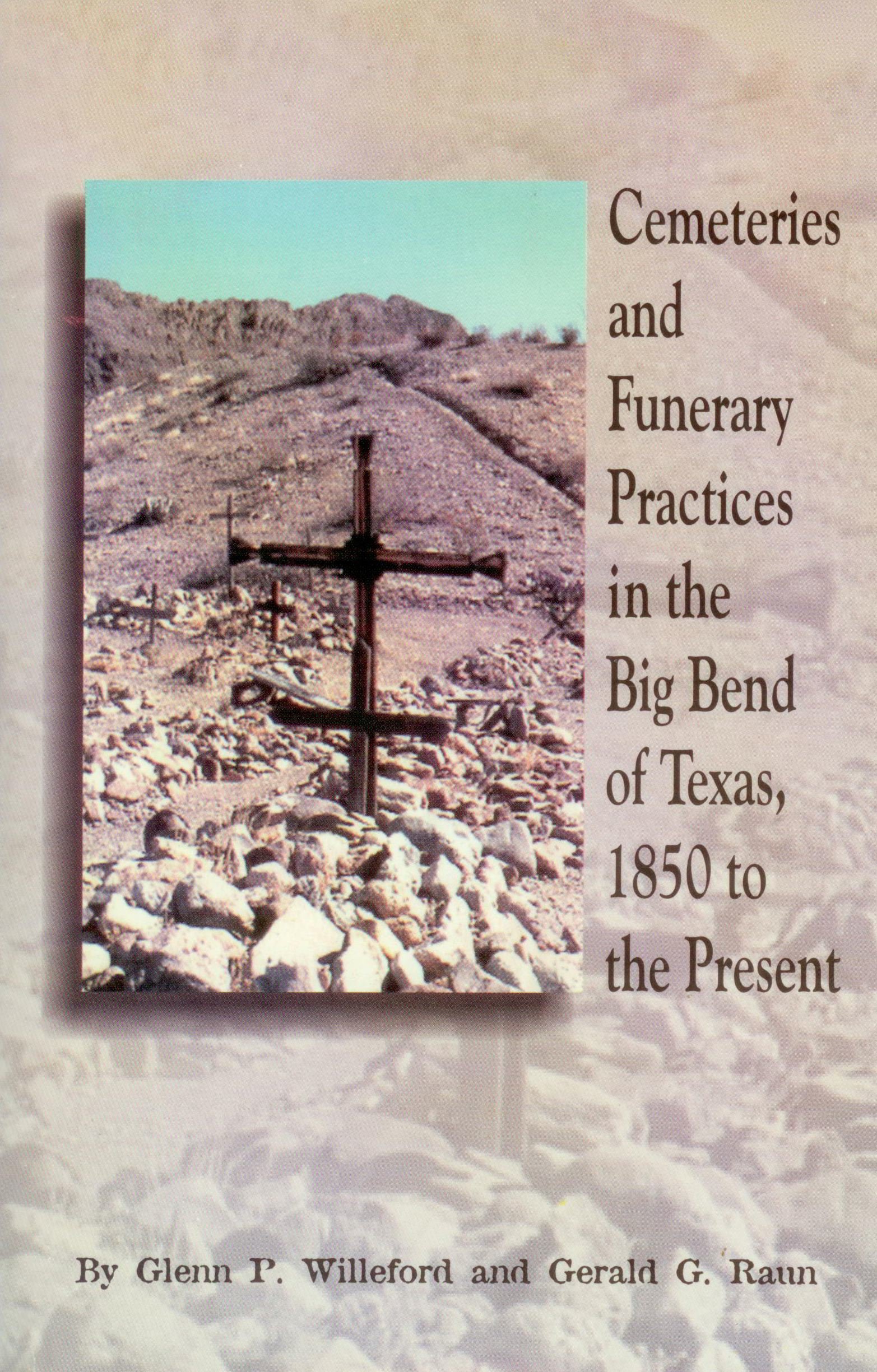
Glenn Willeford and Gerald Raun have done an insightful study of Big Bend cemeteries. Their "Cemeteries and Funerary Practices in the Big Bend of Texas, 1850 to the Present" is 240 pages packed full of out of the ordinary tidbits of information that genealogists or anyone interested in finding the grave site of a long lost relative will want to read. While many parts of the country have readily available listings of local graveyards and their residents, final resting places in the Big Bend has been a long overlooked topic.
Willeford and Raun did not simply republish courthouse records but did extensive research of the some 63 graveyards in the Texas Big Bend and personally visited each of them. Many of these isolated family cemeteries have escaped official records in Brewster, Presidio and Jeff Davis counties and the book finally documents these historic gravesites. Included are 42 photographs of various cemeteries as well as detailed locations.
Glenn Willeford is an American writer and professor of history who lives in Chihuahua. In 2004, his first novel, "Red Sky In Mourning" became the first English language book published by Universidad Autonoma de Chihuahua. A follow up to Red Sky titled "Passage to Lisbon" is now in the works. Gerald Raun, Ph.D, is the author of four books including the first "Snakes of Texas" offerings and over fifty journal articles on biology and history. "Cemeteries and Funerary Practices" is available at Front Street Books in Alpine. Email Front Street at findit@fsbooks.com or call 432-837-3360.
Also see: http://www.fsbooks.com/books/books.html#willeford
Gj
[ view entry ] ( 4884 views ) | permalink |
John Casas

Five years ago I undertook a project that, like a time machine, catapulted me back to the Trojan War, then to our subsequent ancestral home in Italy, and, via Spain and Mexico, to the Big Bend of Texas.
Initially, my intention was to put together a primer for the immediate ancestors of my great-grandfather, don Federico Villalba, who moved from Aldama, Chihuahua, to the border in San Carlos. The "primer" ballooned into a three hundred-plus-page treatise filled with photographs chronicling the Villalba family legacy. The book was received so enthusiastically by our family that I was encouraged to have it published, not only for ancestral knowledge, but as historical record. I am happy and honored to add that my book, Federico Villalba's Texas: A Mexican Pioneer's Life in the Big Bend, is due on the shelves this July.
My mother, Herminia, was born on Rancho Barras on the banks of the Rio Grande, in 1926. She is the daughter of Regina Villalba, Federico's pistol-packing daughter. He also had five sons: Felipe -- the eldest, Jorge, Federico Jr., Jacobo ("Jake"), and Santos.
Barras Ranch was situated in the present-day Big Bend National Park.
The sixteen hundred-odd acres Federico leased from A. J. Compton are designated as the Diablo Ranch on the Park Service map. El Diablo was the family's second landholding. The initial ranch, a ten thousand-acre estate, was situated in Burro Mesa. Federico was obligated to enjoin ownership of that holding to the Alpine law firm of Mead and Metcalf in 1924 in return for legal services when his son Jorge was indicted and tried for homicide in the shooting deaths of the Coffman brothers. Jorge was acquitted of the charges by a Brewster County jury.
Federico, at one time, also owned another ten thousand acres on the west side of the Chisos Mountains. In addition to other ranchland Federico had several sections set back as a hunting preserve on the present-day Terlingua Ranch. In the early 1900s he discovered cinnabar on Cerro Villalba, property that had been named for the family. Federico accepted a partner named William Study and began development of the Study Butte Mine. Cerro Villalba was thereafter called Study Butte. My great-grandfather was also proprietor of the Study Butte Store through the 1920s. Not far away was his Bar La Fiesta, a local "waterin" hole. Across the Rio Grande Federico also owned five-thousand acres in the vicinity of old San Carlos, which today is known as Manuel Benavides; additionally he had a successful talabarteria, or leather goods shop, at Santa Elena on the Chihuahua side across from today's Castol'n (originally also called Santa Elena) in the national park.
For the two years I engaged in research hardly any contemporary documentation of Federico's holdings and accomplishments in the Big Bend came to light. It seemed almost as those had been hidden away. Kenneth B. Ragsdale in his tome Quicksilver: Terlingua and the Chisos Mining Company (Texas A&M University Press, 1976), did, however, single out and devote an entire chapter to the shooting of the Coffman boys and of Jorge Villalba's trial. Ragsdale also mentioned my great-uncle Jake's murder in November, 1931, and the purloining of the family property in the Chisos.
By and large, the record of Villalba experiences in the Big Bend has been condensed to the tragedies that befell them and various other well-placed Hispano-American families. There is so much more to the historical record of occupation in the region that has as yet been told. I am grateful that Mike Hardy at Iron Mountain Press feels the same way. In this offering, and in my upcoming prequel, Of Cowboys and Kings, we invite the enthusiast to sense the Big Bend border country through the aspect of one of our earliest settlers, my visabuelo don Federico Villalba.
The book will be available through Front Street Books (fsbooks.com) in Alpine, TX, Barnes & Noble and Amazon.com and Iron Mountain Press, Houston, TX.
[ view entry ] ( 5591 views ) | permalink |
CANDELARIA BRIDGE ISSUE RESPONSE FROM MARTIN LUJAN-CHEIF OF STAFF FOR TEXAS REPRENSATIVE PETE GALLEGO
Mr. Justice:Thank you for the information. While I was not aware of this, Mr.
Gallego may be. Regardless, I will distribute this to everyone in our
office so that it is on our radar.
Thanks again.
Martin
-----Original Message-----
From: editor@rimrockpress.com [mailto:editor@rimrockpress.com]
Sent: Thursday, June 05, 2008 12:19 PM
To: Martin Lujan
Subject: Candelaria bridge closing issue
Martin,
Please take a few minutes to look at and consider the impact of U.S.
Border patrol ordered closing of the Candelaria brige. You will find
much information about this issue at Glenn's Texas History Blog:
www.rimrockpress.com/blog. Hope that you will make Pete also aware of
the problems if you and he are not already.
Sincerely,
Glenn Justice
Maybe Pete can help? Texas House Representative Pete Gallego may be contacted at:
http://www.house.state.tx.us/members/di ... llego.htm.
No response from U.S. Rep. Ciro Rodriguez despite repeated attempts. Guess he and his staff are too busy. Rep. Rodriguez may be contacted at:
http://www.rodriguez.house.gov/.
Gj
[ view entry ] ( 6393 views ) | permalink |
Have just learned that you can now hear Big Bend radio live on the internet at bigbendradio.com during scheduled times. There you will find the voice of the last frontier broadcasting KVLF and KALP feeds from their studio at Kokernot Field in Alpine. They have Big Bend news, sports and weather and this is great for those of us on the river who cannot hear their signals over the airwaves. You must download Silverlight from Ray's website. It runs beautifully on my osx mac. In addition to the streams, you can download the Alpine La Entrada hearings, weather and local sports and find the streaming schedule. For more info, check out their website. Thanks Ray for this wonderful service!
Gj
[ view entry ] ( 4747 views ) | permalink |
<<First <Back | 12 | 13 | 14 | 15 | 16 | 17 | 18 | 19 | 20 | 21 | Next> Last>>